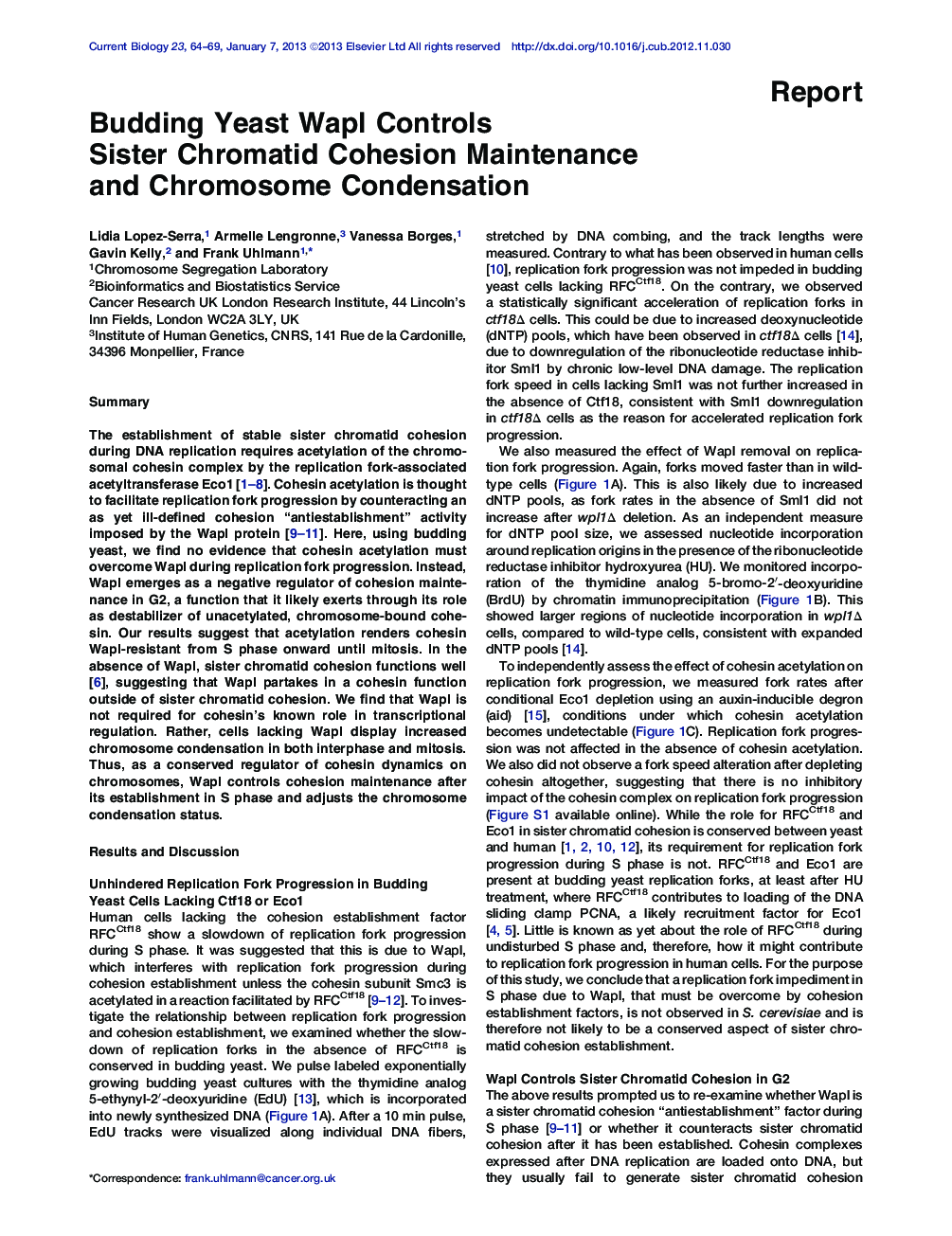| کد مقاله | کد نشریه | سال انتشار | مقاله انگلیسی | نسخه تمام متن |
|---|---|---|---|---|
| 2043185 | 1073330 | 2013 | 6 صفحه PDF | دانلود رایگان |

SummaryThe establishment of stable sister chromatid cohesion during DNA replication requires acetylation of the chromosomal cohesin complex by the replication fork-associated acetyltransferase Eco1 [1, 2, 3, 4, 5, 6, 7 and 8]. Cohesin acetylation is thought to facilitate replication fork progression by counteracting an as yet ill-defined cohesion “antiestablishment” activity imposed by the Wapl protein [9, 10 and 11]. Here, using budding yeast, we find no evidence that cohesin acetylation must overcome Wapl during replication fork progression. Instead, Wapl emerges as a negative regulator of cohesion maintenance in G2, a function that it likely exerts through its role as destabilizer of unacetylated, chromosome-bound cohesin. Our results suggest that acetylation renders cohesin Wapl-resistant from S phase onward until mitosis. In the absence of Wapl, sister chromatid cohesion functions well [6], suggesting that Wapl partakes in a cohesin function outside of sister chromatid cohesion. We find that Wapl is not required for cohesin’s known role in transcriptional regulation. Rather, cells lacking Wapl display increased chromosome condensation in both interphase and mitosis. Thus, as a conserved regulator of cohesin dynamics on chromosomes, Wapl controls cohesion maintenance after its establishment in S phase and adjusts the chromosome condensation status.
► Cohesin acetylation does not speed the budding yeast replication fork
► Acetylation gives cohesin resistance to Wapl throughout G2 and mitosis
► Cohesin dynamics, regulated by Wapl, control the chromosome condensation status
Journal: - Volume 23, Issue 1, 7 January 2013, Pages 64–69